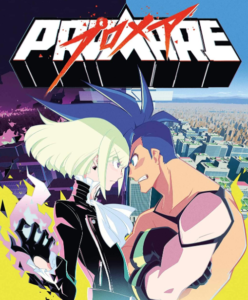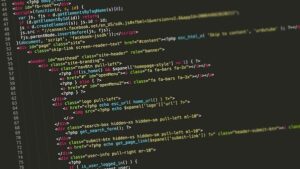In the play “A Raisin in the Sun” written by Lorraine Hansberry, the author uses stage directions to give us a better understanding on what the premise of the story is by telling us what the characters do and how they act. This can be seen when the current living situation is described at the start of the play, where it talks about the furniture being very weary and teared as well as dusty. This explains how they react after they receive the life insurance and how selfish they mostly become such as Walter, who immediately wants to invest in a liquor store. However, Mama isn’t selfish and just wants to move to a better home for all of them.
Author Archives: Waleed Shah
Blog Post #6
After finishing Benito Cereno, I believe the Herman Melville depicted enslavement in a positive light and Delano’s blindness plays a part into this. You see, in the mind of Delano he sees both the slaves and Benito’s crew as working together in harmony and is even amused at the fact that Babo, one of the slaves, helps the clumsy Benito. But later it is all revealed to be a farce and that Babo intended to kill Benito just like the slaves killed Benito’s passengers and crew members. Eventually, the uprising by the slaves is “heroically” defeated by Delano’s crew and we read about Benito and Delano interacting afterwards with Benito basically being scarred for life and eventually retreating to a monastery, where he dies. I think the author tries to make the reader sympathize with Benito multiple times but as for me, he literally engaged in slave trade so the slaves have a justification as to why they did what they did.
Blog Post #5: Narrative
-
- In Chapter 6 of Literary Theory by Johnathan Culler, the author mentions that the 2 things that make up a story which are plot and discourse. In a story, plot is what determines the intro and the conclusion while discourse is through the point of view in which the story is being told through.

One recent example I can think is from the animated movie called Promare. The basic plot is that there are humans that mutate into the Burnish, who are people who can wield fire. This causes a disaster and half of the world is destroyed. 30 years afterwards, we follow the story of a man called Galo Thymos who is a part of the Burning Rescue, a firefighting force. They usually respond to attacks by the Mad Burnish, a radical group of Burnish that seemingly attack for no reason. In Galo’s point of view, the Mad Burnish are seen as terrorists. However, later in the movie Lio Fotia (the leader of the Mad Burnish) reveals to him that they try and save people who turn into Burnish because if they leave them alone the government will capture them and use them in cruel experiments. In the conclusion, they do figure out how to stop the government and stop people turning into Burnish. - In the section titled “What stories do”, Johnathan Culler says narratives are supposed to satisfy the reader in some way, whether its through enjoyment or through knowledge. I agree with him, as there is no point in reading a narrative otherwise.
- In Chapter 6 of Literary Theory by Johnathan Culler, the author mentions that the 2 things that make up a story which are plot and discourse. In a story, plot is what determines the intro and the conclusion while discourse is through the point of view in which the story is being told through.
Blog Post #4
In Chapter 5 of Literary Theory, Johnathan Culler discusses how poetry and rhetoric are quite similar and yet very different in that poetry, while it uses rhetoric through the use of rhetorical figures and techniques (such as metaphor and metonymy), is more artistic and is used to evoke emotions of the reader.
One rhetorical technique that I have seen being used in Diving into the Wreck by Adrienne Rich is metaphor. Specifically, stanzas 6 and 7 which talk about the diver finally finding the wreck after swimming through the sea. I found the use of metaphor in these stanzas interesting because it was used in subtle ways to bring up the idea of how stories/myths can be remembered or forgotten throughout the course of history, whether by accident or on purpose.
Blog Post #3
In this chapter, the idea I found the most interesting about the relationship between language and meaning is how context can shape the meaning of a piece of literature by looking at what time period it was written in and analyzing how people in this era were and how things were back then. But even context itself can be limitless, with famous pieces of text and their meaning changing as time goes on.
One example that I can think of that happened fairly recently is with JK Rowling’s Harry Potter series. In the books, the bankers of the wizard world are controlled mostly by goblins. Back when these books were still being released, many people glossed over it as a fantasy thing. But after the recent controversies with JK Rowling and her extreme opinions, upon looking at the books with this in mind brings a different meaning to these goblins. In the books, they are described as goblins with “hooked noses” and “with a distrust for anyone else but their own kind”, which sounds extremely similar to racist caricatures of Jewish people.
Blog Post #2: Literature as Fiction
In Chapter 2 of Literary Theory: a Very Short Introduction by Jonathan Culler, the author talks about the nature of literature and shows different definitions of literature from other angles. Of all the angles that he talked about, I found the angle of literature being fictional interesting, as the author says ” The literary work is a linguistic event which projects a fictional world that includes speaker, actors, events, and an implied audience (an audience that takes shape through the work’s decisions about what must be explained and what the audience is presumed to know)”. Because of this, fictional works can have many different interpretations of what they actually mean due to people’s personal experiences and as such the meaning of a piece of literature can change over time. What an author might have attempted to convey in a piece of literature could totally be different than what the reader/speaker might get just because of the way they think/their imagination.
Blog Post #1: What is Literature?
- The most important aspect of this chapter I’ve gathered after reading the first 10 pages is that there are many ways to interpret what literature actually is, and how it is hard to define it. The author makes it clear that there are multiple interpretations and opinions on what literature can be and what counts as such. I believe the reason why the author brings this up is because he wants us to try and challenge our current views on literature and non literature so that we can gain a better understanding of the chapter overall.
- Why does the author separate literature and non literature when it is all up to interpretation?
Waleed Shah’s Introduction
Hello everyone,
My name is Waleed Shah. Currently, I am an undergraduate student majoring in Computer Science about to start their 2nd semester at LaGuardia Community College.

I think coding is a good fit for me, which is why I plan on making it into a long term career. In my free time, I like to listen to music and play video games while hanging out with my friends (which doesn’t really happen as much right now)


